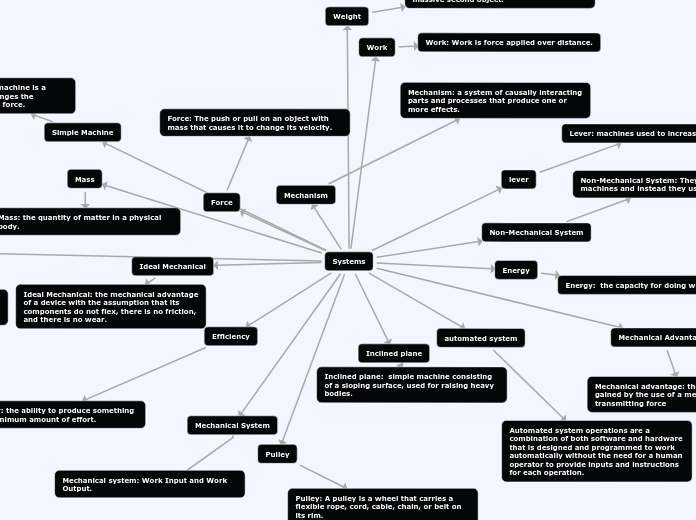
Automated system operations are a combination of both software and hardware that is designed and programmed to work automatically without the need for a human operator to provide inputs and instructions for each operation.
Efficiency: the ability to produce something with a minimum amount of effort.
Energy: the capacity for doing work.
Force: The push or pull on an object with mass that causes it to change its velocity.
Ideal Mechanical: the mechanical advantage of a device with the assumption that its components do not flex, there is no friction, and there is no wear.
Inclined plane: simple machine consisting of a sloping surface, used for raising heavy bodies.
Lever: machines used to increase force.
Mass: the quantity of matter in a physical body.
Mechanical advantage: the advantage gained by the use of a mechanism in transmitting force
Mechanical system: Work Input and Work Output.
Mechanism: a system of causally interacting parts and processes that produce one or more effects.
Non-Mechanical System: They use no machines and instead they use humans.
Productivity: the ratio between the output of production and the input of production factors/means.
Pulley: A pulley is a wheel that carries a flexible rope, cord, cable, chain, or belt on its rim.
Simple machine: A simple machine is a mechanical device that changes the direction or magnitude of a force.
Weight: gravitational force of attraction on an object, caused by the presence of a massive second object.
Work: Work is force applied over distance.